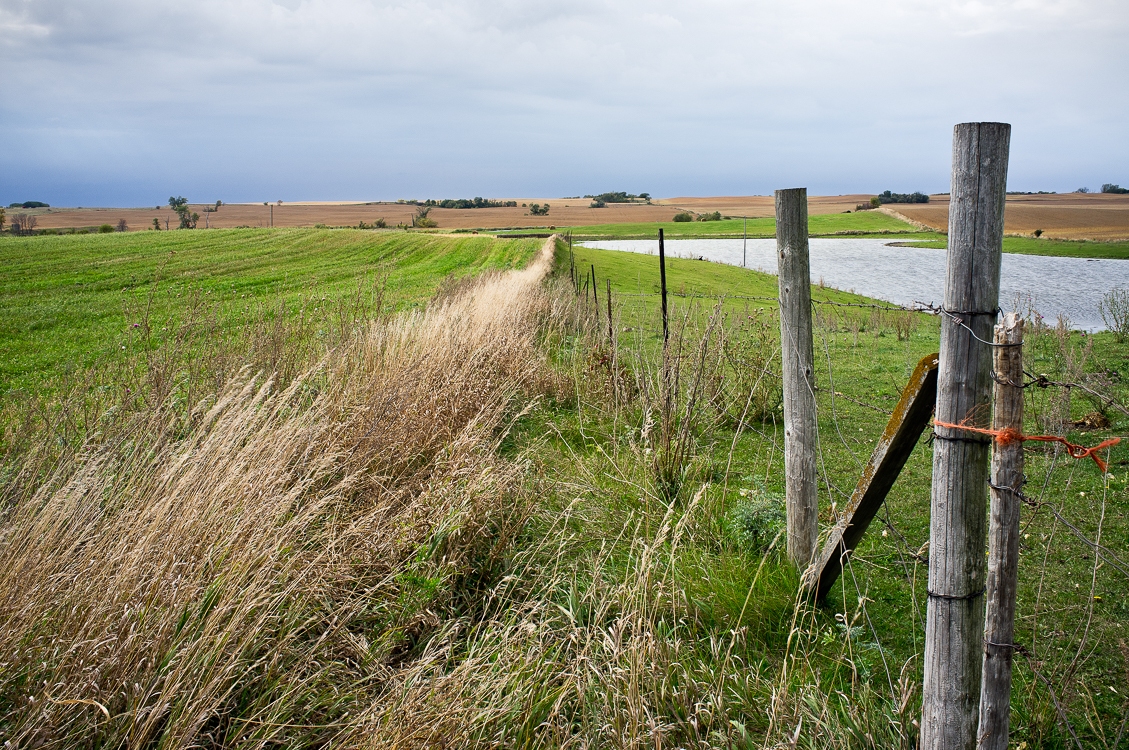Working Land refers to two facets of rural landscape: the idea of working the land as a vocation and as a description of productive ground. My family tree includes immigrant ancestors who made a living from working the soil and some of their descendants who carry on this work to the present day. That personal connection to working land inspired the project.
fenceline
Kubitz farm, September 30, 2014: On the left, a field where the crop changes each year in a rotation: corn, soybeans, alfalfa, wheat and oats. On the right, long-term pasture land for dairy cows’ grazing during the grass-growing seasons. A barbed-wire fence with an orange twine gate-latch divides them. The strip between is not worked, left to the small creatures—crickets, snakes and mice.
